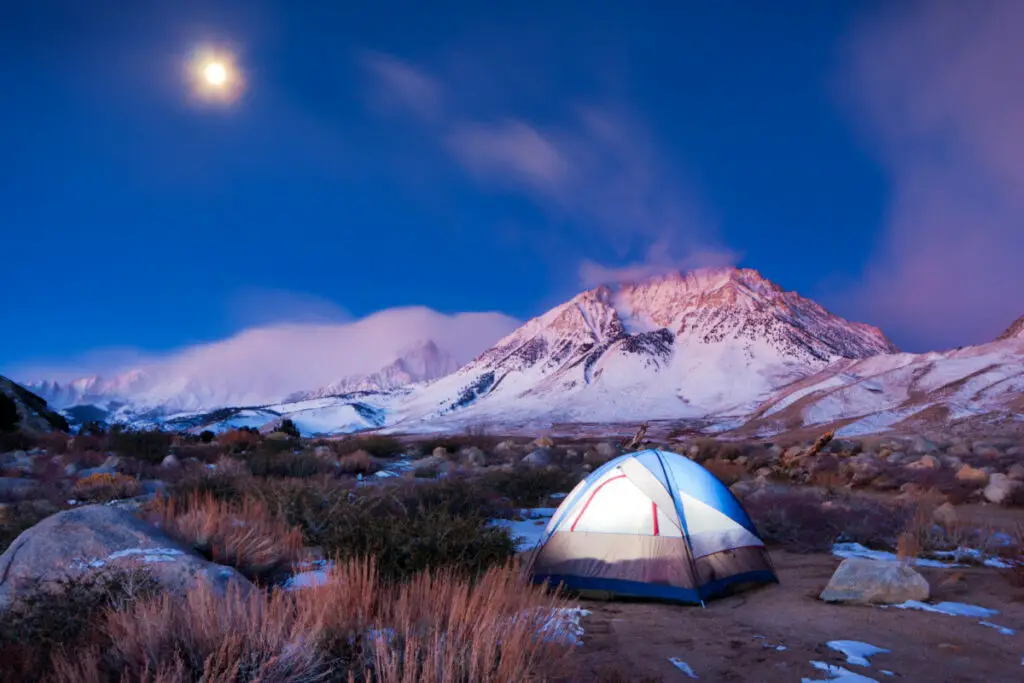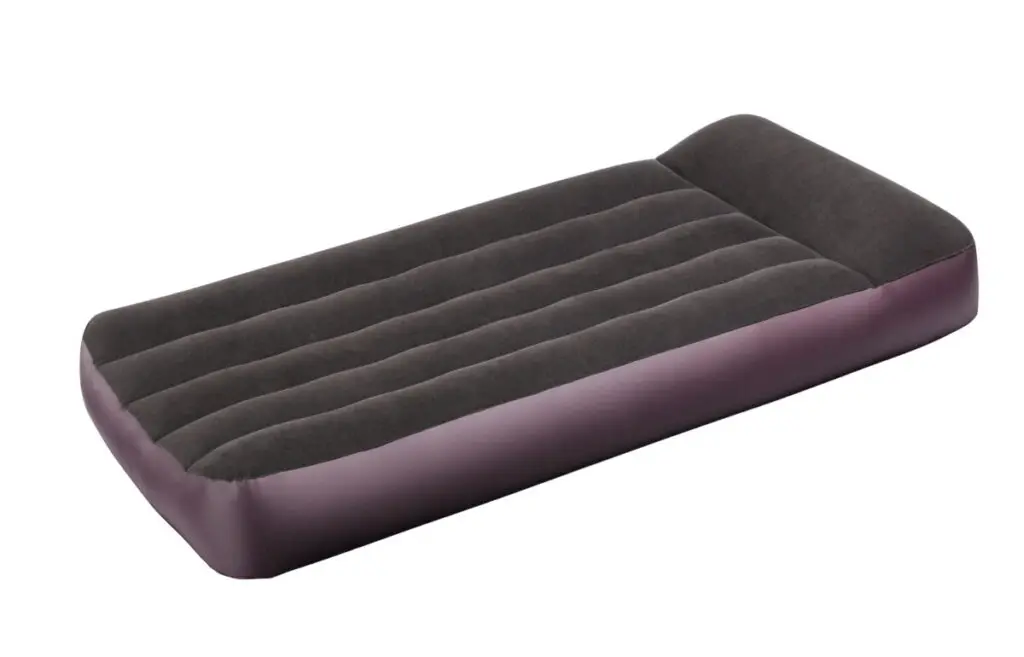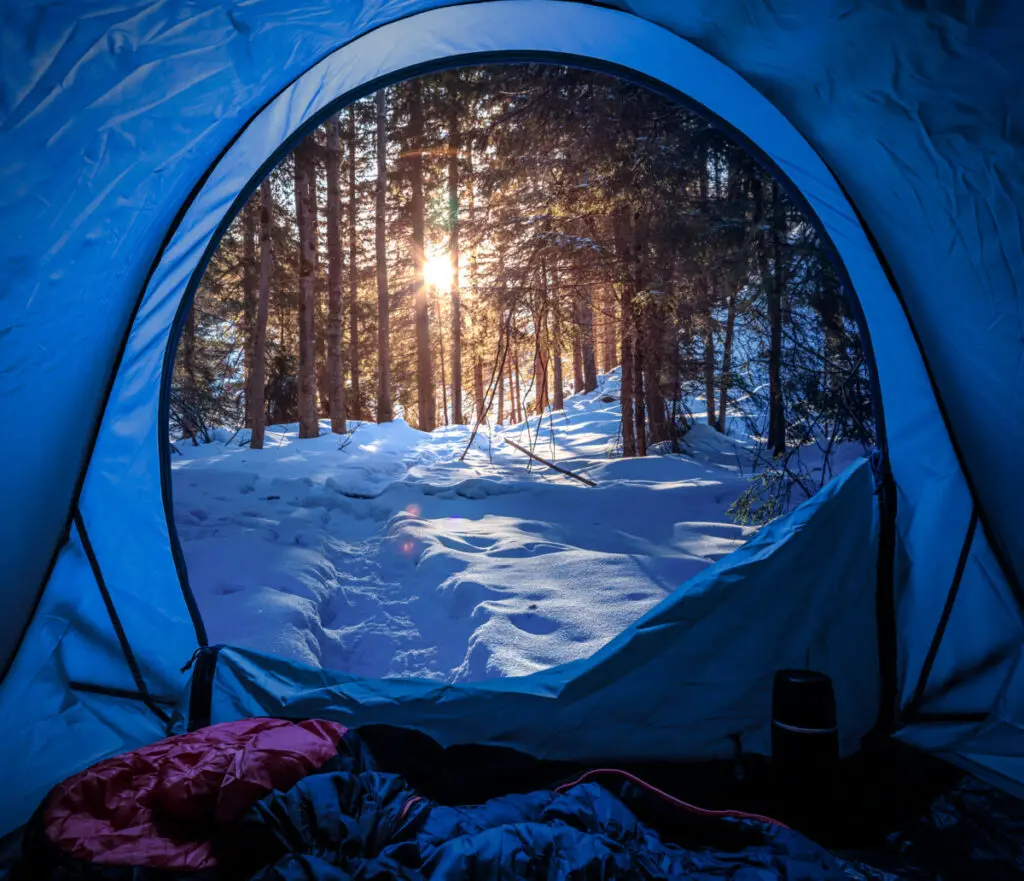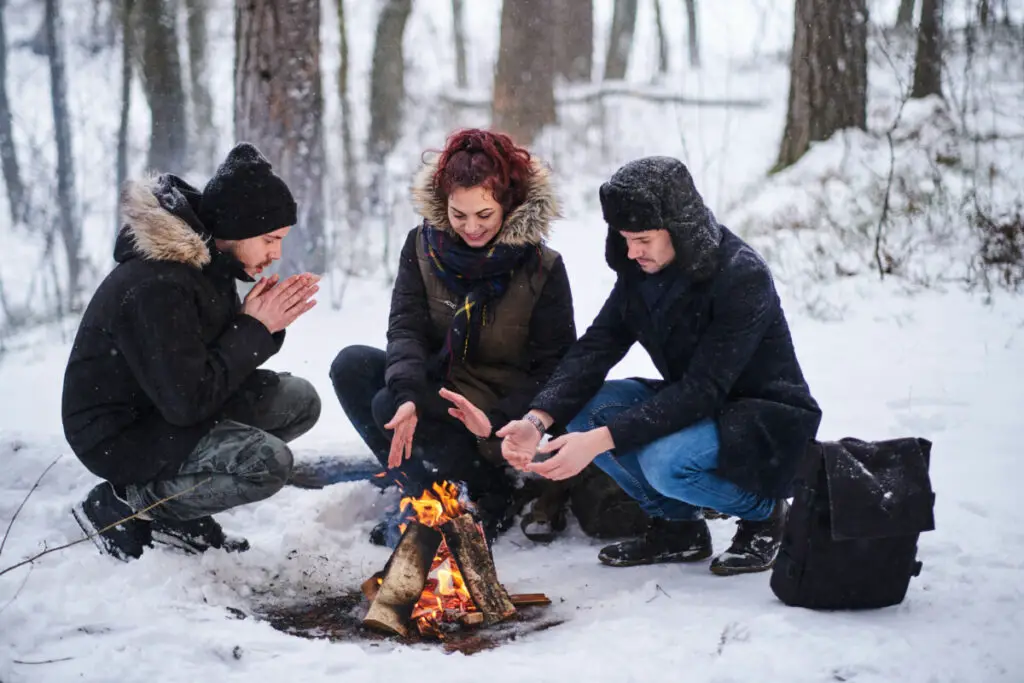
There are a lot of different ways to find comfort in sleeping during camping. And there are several things needed to make any sort of bedding work for any type of camping.
Air mattresses deflate in cold weather and soak up the cold from the ground underneath them. They aren’t the best option for cold camping, but there are ways to mitigate these effects and work around them to make an air mattress function and be comfortable during cold camping.
Most every bedding will have pros and cons as to what would work the best, but there is almost always a way to make it work so that it’s comfortable and safe.
What is Cold Camping?
Cold Camping is also referred to as Winter Camping or Cold-weather Camping. Typically, it involves hiking into the mountains with a small amount of gear, including bedding, food, and a four-season tent. This is done during the winter months and the cold weather is an integral part of it. The idea is to be light and compact to ensure that the essentials are packed and so that the camper can get to their campsite at the end of each day.
There are some variations, such as simply camping up at a campsite during the winter months when snow is abundant in the mountains, snowshoeing is usually part of cold-weather camping as that’s the only way to move properly on top of the heavy snow in the mountains, and a few other variations that are up to the camper’s preferences.
Because it is such a small and compact type of camping, it is important to have gear that works well to keep a camper safe, warm, and happy. There are several different things that can be done to ensure that it all works out, and usually, these tips and tricks apply to regular camping as well.
Cold Camping will be difficult and being prepared for it will help campers be safer as they do so. One of the largest parts needed to ensure that a camper is safe, warm, and happy is making sure their bedding situation is well thought out and safe for them to keep the elements from being too much. (Source)
Pro: Air Mattresses Can be Compact
One of the pros of air mattresses is that they can be folded to be considerably smaller to make space for a lot of other things. Especially if the size of the air mattress is only a twin, that can cut down on a lot of space. The only sad part about that is that the tools to pump it up would also need to be packed. While this might generate a little bit more weight, it’s a small price to pay in making sleep more comfortable and restful for a camper.
Air Mattresses are usually designed to be folded up when they’re not in use, as with a lot of other camping gear, being compact is a boon that many will pay a better price for, simply because it helps to keep things light, especially in the case of winter camping and backpacking.

A cot, for instance, wouldn’t be as compact and would be difficult to carry into nature on a cold-weather snowshoeing adventure, whereas an air mattress can easily be stowed in a backpack and kept there until it is ready to be used. Do keep in mind that the air mattress’s size will have a hand in how much it folds and how compact it gets. A singular twin-sized air mattress will fold much better than a queen size.
Make sure to fold it correctly as well. Folding it incorrectly will keep it from being properly compact and take up space that could be covered and filled with some other supplies. Be patient with folding the mattress up since that can take time and be a little bit of a hassle. That patience will be rewarded with a well-folded mattress, easier to store and easier to carry for outdoor and cold-weathered adventures. (Source)
Con: Air Mattresses Deflate With Temperature Change
Unfortunately, air mattresses are inflated by air, and due to the way air reacts with temperature, when air gets cold it constricts and gets smaller. We see the same thing with glass and air reflects this as well. In that case, it might not be a very good option for cold weather camping unless someone can be okay with perhaps needing to pump it up again as it gets colder. This is completely normal, though rather annoying.
This would happen just the same in regular camping just due to the nature of the air getting colder at night. There’s no way to change or stop that, and the only way to really mitigate it is to be ready and willing to pump it up again when it gets too low. This is simply one of the flaws of air mattresses and wouldn’t necessarily change anything about using it in any other way.
The only other reason an air mattress might deflate is a slow leak or a puncture somewhere in the air mattress. These are not easy to find and would take some patience to find. There are ways to patch and repair it though, so no need to stress too much unless it’s too much of a leak that it wouldn’t be worth fixing.
Keeping an air mattress from getting a leak is simple. Don’t drag it on the ground, clean it after use, and then store it in a bag. Because a camper tracks in all sorts of grit, dragging it on the ground, even in the winter, could cause there to be lesions and snags on the surface of the air mattress. These turn into leaks and then the air mattress deflates. Be gentle with it and it’ll be just fine and functional. (Source)
Pro: Air Mattresses are Less Expensive
Air Mattresses are a lot less expensive than a wide variety of camping gear for sleeping. Mostly because they’re cheap to make and don’t require a lot of upkeep beyond some pretty no-brainer actions, such as folding them properly and as mentioned previously, cleaning them and ensuring leaks are patched correctly.
A more compact camping pad will be compact, yes, but not as comfortable and sometimes, due to the materials used to try and get a camping bed to feel more comfortable and still be compact will be more expensive.
Most Air Mattresses don’t cost a whole ton unless they’re specialty and created to handle and deal with certain things. This isn’t always the best option and there are ways to make cheaper options work. If a camper has the means to invest in a mattress that is designed specifically and especially for weather, then that is a great idea to do.
As wide as the variety and price tags of air mattresses are, there’s still a lot they can be good for despite the cons they have. It’s easy if they’re cheap and break with only a few years’ use to replace them for just as cheap. Whereas, it’s a big letdown to buy a more expensive air mattress only to have it break three years into owning it.
Con: Air Mattresses Soak Up the Cold From the Ground
Air mattresses aren’t as easy to keep from getting cold, which could put them off from being an accessory for the cold camping scene. They soak up the cold from the ground and if someone is sleeping solely on an air mattress, it can get too cold really fast. With cold camping, that could get dangerous really fast and isn’t something that any sort of camper wants to experience. Hypothermia or frostbite due to being too cold from below can be dangerous.
The air mattress is full of air and as the ground cools even more at night, that air mattress will soak that cold right up into the mattress, and then anyone on the mattress will be cold. There are ways to lessen and prevent this, but it would mean packing in more things and sometimes, especially with backpacking and camping trips where the camper has to hike to the campsite, it makes that incredibly difficult since there would be more to carry.

The simple fix for this is actually to lay a blanket underneath the air mattress so that it becomes harder for the cold from the ground to leech up into the air mattress. In addition to that, lay a blanket down underneath the sleeping bag and then do all the regular things a camper would do for cold weather camping to ensure their sleeping bag is all nice and cozy for their night.
This won’t always work and usually the more between the sleeping camper and the air mattress there is, the better the insulation will end up being. There’s not really much else that could work unless it would be a cot or something else completely off the ground since heat rises. That’s just not as plausible though since cots are much bulkier and harder to pack in whereas the compactness of an air mattress will weigh out that con for cots.
It also can’t hurt to have a few extra blankets even if they’re not used for under and over the air mattress. They can help generate and keep heat in a small area and preserve that heat rather than letting it slip out and chill, as things will get chilly, especially body heat, in places that get that cold at night and during winter camping. (Source)
Pro: Air Mattresses are More Comfortable
A pro for air mattresses is that they are much more comfortable than laying on the cold ground for a few different reasons. The cold from the ground, the rocks and roots and other ice packed underneath a tent, all sorts of things that just come with the territory of camping.
It can make sleeping during camping absolutely awful to be cold or have a root in the back during the entire night. A not rested camper will be an unhappy camper. Air mattresses help to make it more of a restful night and if done right will keep a camper nice and cozy with comfort and warmth throughout the whole night.
Air mattresses can feel almost like a real bed, and while it’s not for everyone, it is super helpful in making sure a camper is rested and ready for another day of adventuring. They’re miles more comfortable than a camping pad, or a foam pad, which makes it a lot nicer to sleep on or even just rest on.
Alternatives to Air Mattresses for Cold Camping
While air mattresses work, they might not work for everyone and that is okay. The idea with camping and sleeping, in general, is to get what works best. There are alternatives to an air mattress and some of them will work better for others but not as well for some. Luckily, there are ways to make things work on an individual basis.

There are foam pads, camping pads, smaller air mattresses like camping pads, and even cots. For cold camping though, it’s best not to take anything that will be larger and more difficult to pack down small and compact since most of what a camper will bring with them has to fit in whatever they are using to carry the gear. As well as something that won’t be too heavy.
A cot could be split up in multiple ways, but would still weigh a camper down and that could be dangerous when a camper is walking on snow and out in the cold weather since moving more quickly is beneficial to those campers.
The best alternative would be the something that’s off the ground and if that’s not an option, a camping pad with something underneath to stave off the cold and a good amount of blankets as well as some other heating method to keep the camper from getting frostbite and preserving their body heat.

